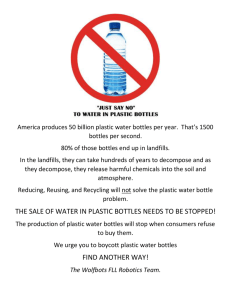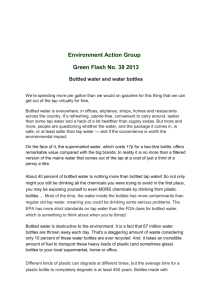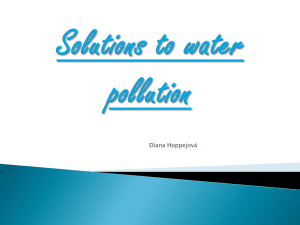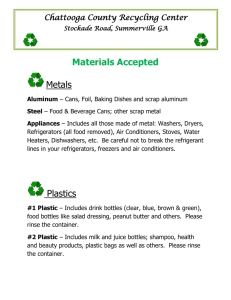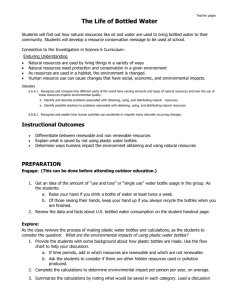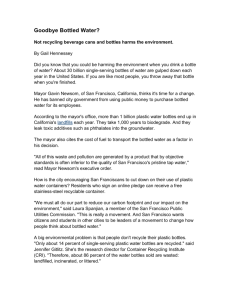Name: Date: 6B- _____ ELA: Sample Nonfiction Essay: “All Bottled
advertisement
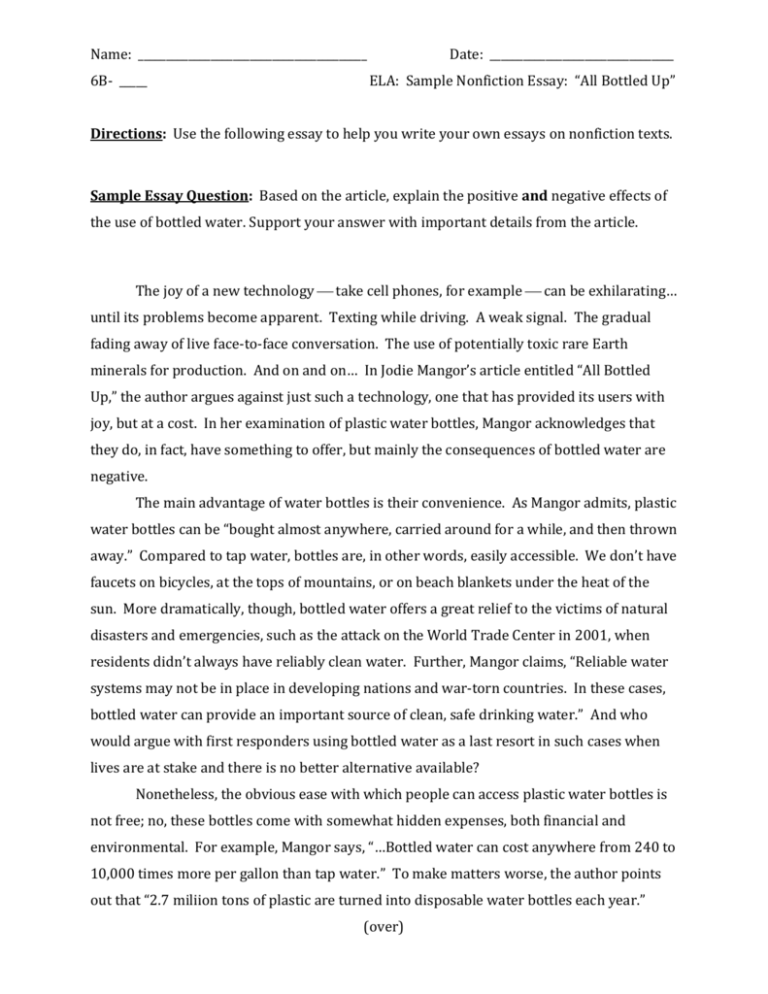
Name: _________________________________________ 6B- _____ Date: _________________________________ ELA: Sample Nonfiction Essay: “All Bottled Up” Directions: Use the following essay to help you write your own essays on nonfiction texts. Sample Essay Question: Based on the article, explain the positive and negative effects of the use of bottled water. Support your answer with important details from the article. The joy of a new technology take cell phones, for example can be exhilarating… until its problems become apparent. Texting while driving. A weak signal. The gradual fading away of live face-to-face conversation. The use of potentially toxic rare Earth minerals for production. And on and on… In Jodie Mangor’s article entitled “All Bottled Up,” the author argues against just such a technology, one that has provided its users with joy, but at a cost. In her examination of plastic water bottles, Mangor acknowledges that they do, in fact, have something to offer, but mainly the consequences of bottled water are negative. The main advantage of water bottles is their convenience. As Mangor admits, plastic water bottles can be “bought almost anywhere, carried around for a while, and then thrown away.” Compared to tap water, bottles are, in other words, easily accessible. We don’t have faucets on bicycles, at the tops of mountains, or on beach blankets under the heat of the sun. More dramatically, though, bottled water offers a great relief to the victims of natural disasters and emergencies, such as the attack on the World Trade Center in 2001, when residents didn’t always have reliably clean water. Further, Mangor claims, “Reliable water systems may not be in place in developing nations and war-torn countries. In these cases, bottled water can provide an important source of clean, safe drinking water.” And who would argue with first responders using bottled water as a last resort in such cases when lives are at stake and there is no better alternative available? Nonetheless, the obvious ease with which people can access plastic water bottles is not free; no, these bottles come with somewhat hidden expenses, both financial and environmental. For example, Mangor says, “…Bottled water can cost anywhere from 240 to 10,000 times more per gallon than tap water.” To make matters worse, the author points out that “2.7 miliion tons of plastic are turned into disposable water bottles each year.” (over) This is a staggering number, exacerbated by the fact that people pay an environmental price to manufacture these bottles and ship them around the world, using precious and dirty fossil fuels that create pollution in the process. After traveling for thousands of miles from manufacturer to consumer, water bottles end up roughly seventy-seven percent of the time, according to Mangor in the nearest garbage can and then in a landfill; only twenty-three percent of people recycle their well-traveled plastic bottle. Ironically, the strength of plastic water bottles, their disposability, is their weakness. People enjoy the ease with which they can simply throw away their bottles after each use, sometimes even in the thick of nature: on a safari in Africa; at a picnic alongside the river; or during whalewatching in the sunshine of the bay. After all, the bottles appear everywhere and then they just go away, right? Clearly not. Look at a landfill. It’s hardly invisible. And, while many consumers view plastic water bottles as the safe option, Mangor states that “in developed nations such as the United States and in Europe, regulations that ensure safe water are often stricter for tap than bottled water,” adding that water sourced in Armenia and then sold on American shelves “…contained arsenic levels as high as 674 micrograms per liter,” well above the United States’ limit of ten micrograms per liter. In review, plastic water bottles do have their perk, but it comes at a staggering cost. Essentially, Jodie Mangor’s article reveals that the joys of a new technology can sometimes blind consumers from seeing its enormous hidden costs. After all, it’s not always easy to see the rainforest through the shiny brilliance of fake plastic trees. 2

